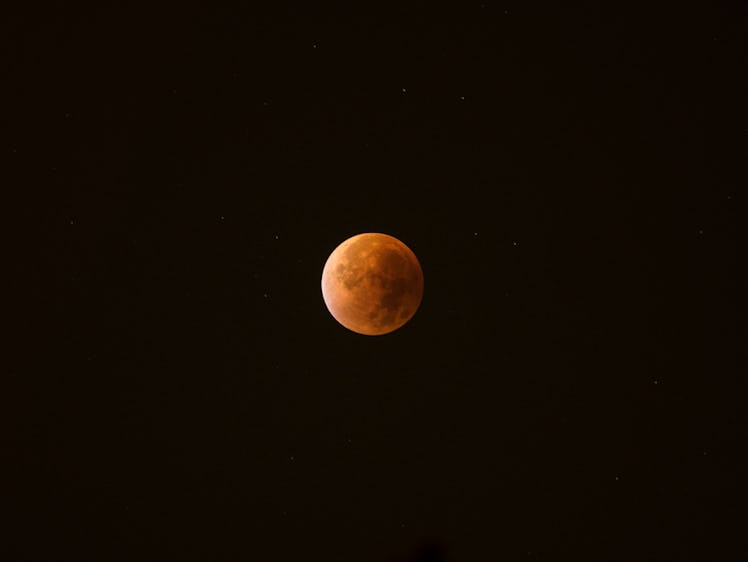
Here's The Reason Why The Blood Moon Takes On A Gorgeous Red Color
Shoot for the moon, and be happily surprised when you land in the stars. Space has been putting on quite a show for us this year. We rang in the New Year with the Wolf Moon, and at the end of the month on Jan. 31 we'll welcome the Super Blue Blood Moon. It's all part of a three-act play that has left us incredibly inspired and interested in what the universe has in store. Growing up, studying the solar system was probably the best part of science class. But, there's still so much left to learn and we're stuck wondering things like, why is the Blood Moon red?
A Blood Moon might sound like something fit for fall. I'm sure if we all look close enough, every episode of Stranger Things has a Blood Moon in the sky (right next to that awfully scary shadow creature). It only seems right, don't you think? But, Halloween is many months away and according to science, we shouldn't take the name so literally. Put away your witch costumes and copies of Hocus Pocus — it'll be here soon enough.
Like us, the moon goes through its phases. There are the full moons that put everybody in some kind of a mood, and the new moons where our circle in the sky joins the dark side for a few days. Our star signs have taught us so much about ourselves, but it's time we truly get a little schooled and brush up on the Blood Moon.
What is a Blood Moon?
A Blood Moon is another name for a total lunar eclipse. According to timeanddate.com, the nickname comes from the reddish color the moon takes on when this celestial event occurs. When you look up at the sky on an average night, our main squeeze in space often looks like a wheel of white cheddar. The Blood Moon is sort of a makeover, and you'll notice that our good friend looks more like gouda.
During a total lunar eclipse, the moon falls completely in the Earth's shadow. In other words, if the Sun, Earth, and moon are all in a line, then the Earth would be the monkey in the middle. The part of the shadow that engulfs the moon is called the umbra.
Why is the Blood Moon red?
The Blood Moon is red because it's still reflecting some rays of sunlight. Although a majority of the sunlight is blocked by our planet's shadow, some of the sun still radiates onto the moon. According to NASA, Earth's atmosphere curves the light just right, which is why we still can see such a sight. The result is a totally saturated surface of the moon. Think of the colors of a sunset. Those deep reds, oranges, and yellows will be spread like perfectly mixed paint onto the moon. It's a lunar light show you won't want to miss, so get your cameras ready to snap away.
When is the Super Blue Blood Moon?
So, when will the next Blood Moon happen? Well, lucky for us, the show is going to be extra spectacular this time around. On Jan. 31, there will be a Super Blue Blood Moon. Before you get carried away, this doesn't mean the moon will be multicolored.
A Super Blue Blood Moon is essentially a super-sized moon that will still be the color of a sunset. It's called a Blue Moon because it is the second full moon to happen within the month — not because it'll also be showing off colors similar to the sea.
This event hasn't occurred in more than 150 years, so you'll want to be sure to set your sights on the sky. Depending on your time zone, your viewing party might call for some early morning mimosas or pulling an all-nighter. In some places around the globe, the show won't start until Feb. 1, which means it really won't be a Blue Moon. But, don't worry, because you'll still get to see the Blood Moon in all its beauty. Science can be tricky, but this celestial event might be the coolest you'll ever come by.